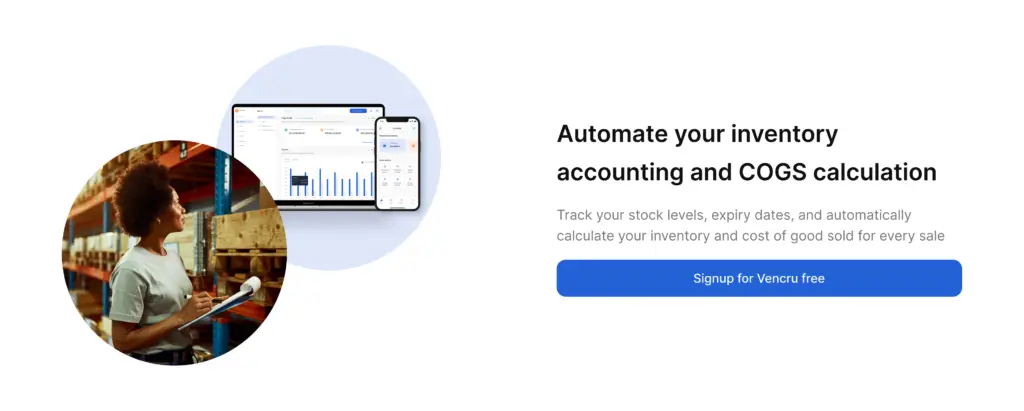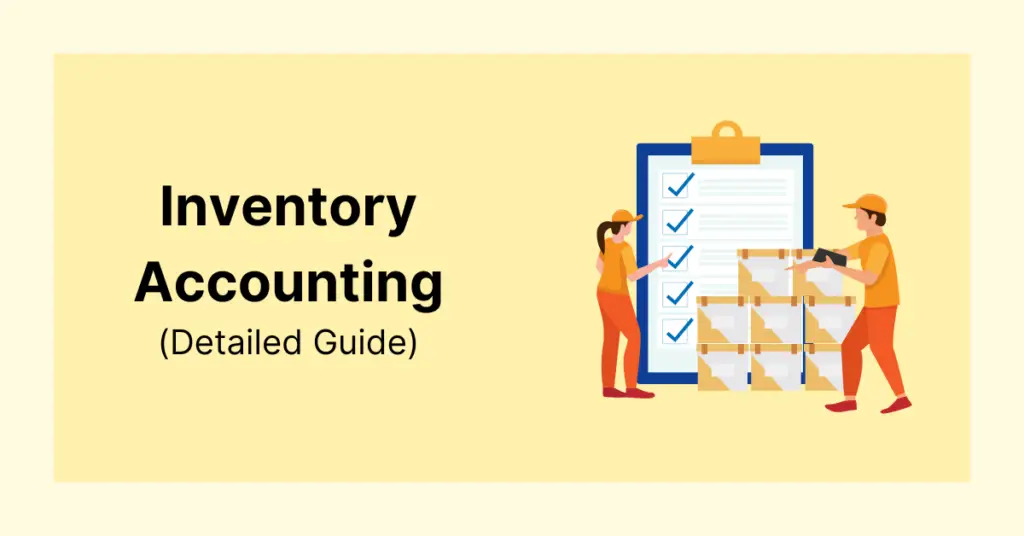Inventory is the lifeblood of a business, crucial not just in operations but also in financial accounting. But what exactly does inventory mean in accounting terms, and how is it recorded? This blog aims to serve as a comprehensive guide to understanding inventory in accounting. In this article, we will cover how to classify inventory in accounting and various costing methods such as First-In, First-Out (FIFO), Last-In, First-Out (LIFO), and the Weighted Average. Whether you’re a business owner, an accounting professional, or simply interested in business finance, this guide is for you.
What is Inventory in Accounting?
Inventory refers to the goods and materials a business holds for resale or use in the production process. In essence, inventory is an asset that companies acquire to convert into revenue, either directly by selling it or indirectly by using it to manufacture goods that are then sold. Inventories usually consist of raw materials, work-in-progress, and finished goods. Each type serves a different purpose within the business:
- Raw Materials: These are the essential components in the production process.
- Work-in-Progress: These are partially completed goods that are still in the production process.
- Finished Goods: These are completed products that are ready to be sold.
Since it plays such a critical role in a business, effective inventory management is crucial. Businesses need to strike a balance between holding too much inventory, which increases costs, and holding too little, which can lead to lost sales.
Accounting Classification: Is Inventory a current asset or expense?
Inventory is a current asset on a company’s balance sheet. It is “current” because it converts into cash or is used within a short period, usually within one year. As the inventory is sold or used in the production of goods that are sold, it is then transferred from being an asset to becoming an expense, known as the Cost of Goods Sold (COGS) on the income statement.
The transition from an asset to an expense happens through the accounting process. When a business sells its inventory, the accounting entry involves reducing the inventory account with a credit and recognizing the corresponding expense, COGS, with a debit. This way, inventory starts as an asset and becomes an expense only when it directly contributes to generating revenue.

Calculation: How to record inventory in accounting
Let’s consider a simple example using a small retail business: Suppose you own a bookstore and you purchase 100 books for $10 each.
- Your inventory value at this point is $1,000. This amount appears on the balance sheet as a current asset under “Inventory.”
Now, you sell 30 of those books for $20 each. You’ve generated $600 in revenue, but part of that revenue comes at the expense of reducing your inventory.
- The 30 books sold had initially cost you $10 each, so the total Cost of Goods Sold (COGS) for those 30 books is $300.
Here’s how the accounting would look:
- Balance Sheet Before Sale: Inventory = $1,000 (Asset)
- Income Statement After Sale: Revenue = $600
- Balance Sheet After Sale: Inventory = $700 (Asset)
- Income Statement After Sale: COGS = $300 (Expense)
In this example, your original inventory of $1,000 reduces by the $300 COGS, leaving you with a remaining inventory valued at $700. The $300 moves to the income statement as an expense under COGS, directly linked to the revenue of $600.
This showcases how inventory starts as a current asset and becomes an expense (COGS) as it contributes to generating revenue.

What Are The Main Inventory Costing Methods?
There are several methods for calculating inventory cost, each with its own advantages and disadvantages. The typical inventory costing methods are:
- First-In, First-Out (FIFO)
- Last-In, First-Out (LIFO)
- Weighted Average
FIFO (First-In, First-Out)
First-In, First-Out (FIFO) is a method of inventory accounting that assumes the first items added to inventory are the first ones to be removed and sold. The oldest stock (first-in) gets sold first (first-out), not necessarily that the exact oldest items are sold, but rather the cost associated with the oldest items is accounted for first. Use FIFO when your inventory items are perishable or trend-sensitive, as it mimics the natural flow of goods.
Advantages of FIFO
- Natural Flow of Inventory: FIFO often closely mirrors the natural flow of goods in many businesses, particularly in industries where perishable goods are sold.
- Lower Costs: In an inflationary environment, FIFO typically shows lower costs on the income statement as it assumes older, less expensive items are sold first. This results in higher net income compared to LIFO.
- Simpler Accounting: It’s generally simpler to maintain FIFO accounting because it aligns well with the actual movement of goods, making it easier to track and manage inventory.
- Minimized Obsolescence: FIFO minimizes the risks of inventory obsolescence as it ensures that the oldest items are used first.
Disadvantages of FIFO
- Higher Taxes: In inflationary times, because FIFO produces higher net income, it can result in a higher tax liability.
- Less Matching: FIFO does not match current sales revenue with current inventory costs and LIFO, possibly leading to distorted profitability metrics.
- Cash Flow: In inflationary periods, using FIFO could result in higher taxes and, therefore, less cash on hand.
FIFO In Action
Let’s assume Company A has the following transactions in January:
- Bought 100 units @ $10 = $1,000
- Bought 50 units @ $12 = $600
- Sold 120 units
Using FIFO, the Cost of Goods Sold (COGS) would be:
- 100 units x $10 (first lot) = $1,000
- 20 units x $12 (second lot) = $240
- COGS = $1,000 + $240 = $1,240
- The remaining inventory would be 30 units @ $12 = $360
FIFO is commonly used in businesses where inventory has a short shelf life, such as the food and beverage industry. However, it can be applied in various types of businesses and is acceptable under Generally Accepted Accounting Principles (GAAP) and International Financial Reporting Standards (IFRS).
Last-In, First-Out (LIFO) Inventory Method
Last-In, First-Out (LIFO) is an inventory accounting method that assumes the most recently acquired items are the first to be sold. In this system, the latest inventory costs are the first to be expensed as Cost of Goods Sold (COGS), while older costs remain in inventory. LIFO is useful for non-perishable items and in industries where prices are rising, as it minimizes income taxes due to higher COGS.
Advantages of LIFO
- Tax Benefits: In inflationary environments, LIFO usually results in higher COGS and lower reported profits, leading to lower income tax liability.
- Better Matching: LIFO more accurately matches current costs with current revenues, providing a clearer picture of profit margins.
- Consistency: If a business experiences frequent purchasing or manufacturing cost fluctuations, LIFO provides a way to maintain a consistent gross margin.
Disadvantages of LIFO
- Potential for Obsolete Inventory: Since LIFO moves the newest inventory first, older inventory items can remain unsold, leading to potential obsolescence.
- Complex Accounting: LIFO can be more challenging to manage and reconcile, especially in businesses with diverse product lines.
- Limited International Use: LIFO is not permitted under International Financial Reporting Standards (IFRS), only under Generally Accepted Accounting Principles (GAAP) in the United States.
LIFO in Action
Let’s assume Company B has the following transactions in January:
- Bought 100 units @ $10 = $1,000
- Bought 50 units @ $12 = $600
- Sold 120 units
Using LIFO, the Cost of Goods Sold (COGS) would be:
- 50 units x $12 (last lot) = $600
- 70 units x $10 (first lot) = $700
- COGS = $600 + $700 = $1,300
- The remaining inventory would be 30 units @ $10 = $300.
Given the tax advantages and the more precise matching of revenue and costs, LIFO is particularly popular among companies in industries where inventory costs are rising or fluctuate considerably, such as the automobile and technology sectors.
Weighted Average
The Weighted Average method in inventory accounting compromises the First-In, First-Out (FIFO) and Last-In, First-Out (LIFO) methods. Under the Weighted Average approach, the cost of each item in inventory is averaged over the total number of items in inventory, regardless of when they were purchased or manufactured.
Advantages of Weighted Average
- Simplicity: It’s a straightforward calculation that doesn’t require tracking the individual cost layers of inventory.
- Smoothing Effect: This method dampens the impact of price fluctuations, providing a more stable cost figure over time.
- Moderate Tax Impact: The Weighted Average usually results in a COGS and ending inventory valuation somewhere between FIFO and LIFO, leading to moderate tax implications.
Disadvantages of Weighted Average
- Lack of Specificity: This method doesn’t precisely match current costs with current revenues or reflect the specific flow of inventory items.
- Calculation Frequency: The average cost must be recalculated every time there is a new inventory purchase, which could be cumbersome for businesses with frequent inventory changes.
Weighted Average in Action
Let’s assume Company C has the following transactions in January:
- Bought 100 units @ $10 = $1,000
- Bought 50 units @ $12 = $600
- Sold 120 units
First, calculate the weighted average cost per unit:
- Total Cost of Inventory = $1,000 (first lot) + $600 (second lot) = $1,600
- Total Units = 100 (first lot) + 50 (second lot) = 150
- Weighted Average Cost per Unit = $1,600 / 150 = $10.67
Next, find the Cost of Goods Sold (COGS):
- COGS = 120 units x $10.67 = $1,280.40
- The remaining inventory would be 30 units x $10.67 = $320.10.
The Weighted Average method is often used in businesses where inventory items are so intermingled that it becomes difficult to assign a specific cost to an individual unit.
Summary
Inventory accounting is a critical aspect of business operations beyond mere stock-keeping. Inventory is a current asset because it converts to revenue within a short time frame, typically within a year. The transition from an asset to an expense – Cost of Goods Sold (COGS) occurs after a sale. Several methods—First-In, First-Out (FIFO), Last-In, First-Out (LIFO), and the Weighted Average—exist for calculating inventory costs, each with advantages and disadvantages. Whether you operate in a sector dealing with perishable goods, non-perishable items, or anything in between, understanding how to account for your inventory appropriately is vital for financial accuracy and strategic planning.
Related: 20 Accounting Terms Every Retailer and Wholesaler Should Know(Opens in a new browser tab)






